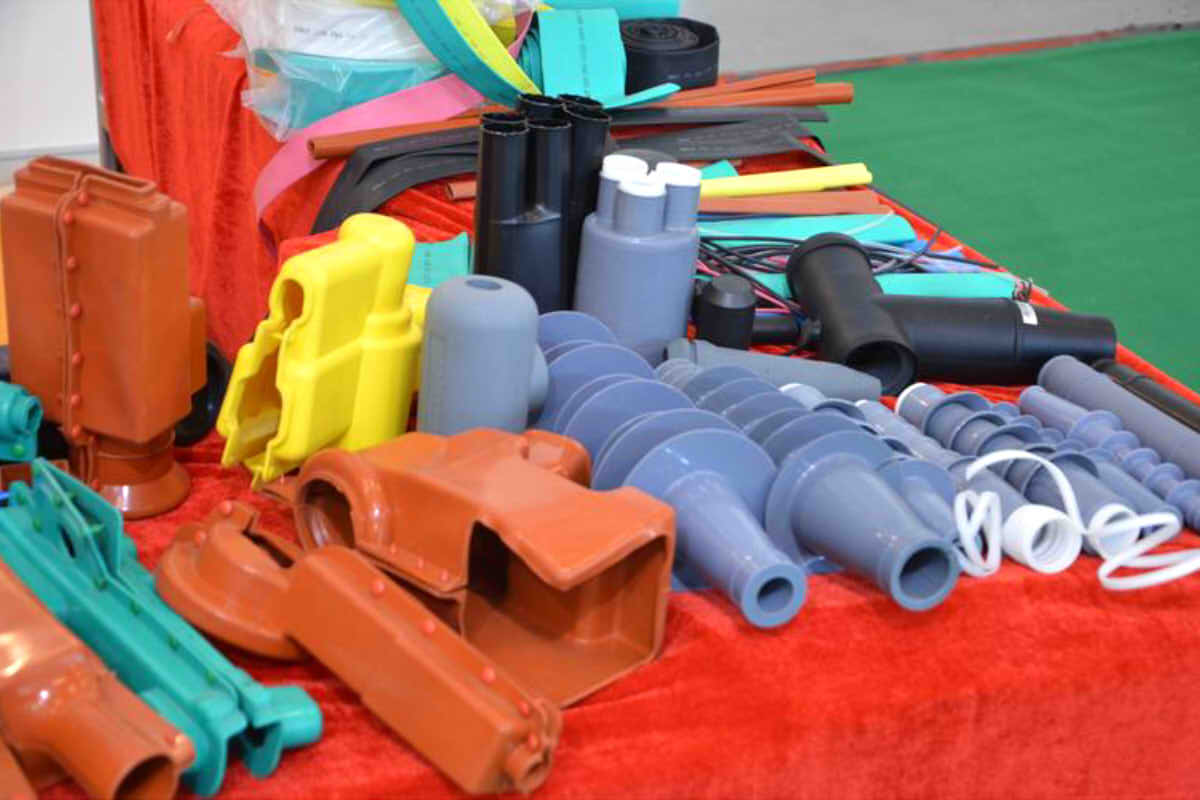The stability and safety of power lines are crucial to our daily lives. Reliable power transmission depends not only on the safe operation of cables, but also the effective collaboration of the teams that support these cables. Between these, electrical cable terminations play a fundamental role.
Table of Contents
- What Are Electrical Cable Terminations?
- What Are the Types of Cable Terminations?
- How to Choose the Appropriate Electrical Cable Termination?
- Precautions in the Installation of Electrical Cable Terminations
What Are Electrical Cable Terminations?
Cable terminations, also known as cable splices, They are essential once the wiring is installed. To form a continuous line, the different cable sections must be connected as a whole, and the connection points are known as cable terminations. Cable splices in the middle part of a line are called intermediate splices., while the splices at the ends of the line are known as terminal heads.
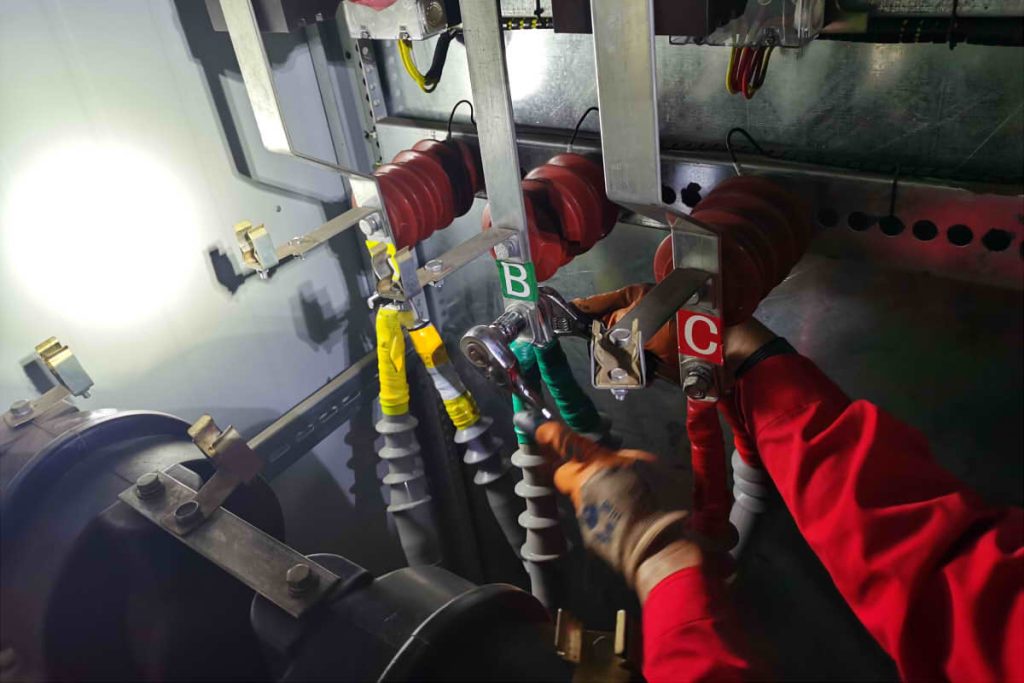
Wire splices and terminal heads not only perform Electric connection, They also play a crucial role in sealing the connection point of the cable to maintain its original insulation level.. Cable terminations can provide protection against water, dust and vibrations, thus ensuring safe and reliable operation of the power line.
What Are the Types of Cable Terminations?
Types of electrical cable terminations can be classified in several ways:
- Depending on the installation location: They are divided into finishes for interior and exterior use..
- Depending on the shape and location: They are classified as terminations for intermediate electrical power cables., terminations for electrical power cable and complete set terminations.
- Depending on manufacturing and installation materials: include heat shrinkable ends (the most common type), dry wrap type, epoxy resin pouring type and cold shrinkage type.
- Depending on driver material: They are divided into terminations for copper cables and terminations for aluminum electrical cables.
- Depending on the number of drivers: there are single conductor terminations, two conductors, three conductor, four conductor (which in turn are divided into four equal conductors and 3+1), five conductors (which are divided into five equal conductors, 3+2 Y 4+1), etc.
- Depending on the joint material: They are classified into plastic cable splices and metal cable splices., where metal cable splices are subdivided into multi-channel waterproof metal splices, anti-bending metal splices, waterproof double lock metal splices, cable splices in flexible plastic tube and cable splices in flexible metal tube.
- Depending on the operating voltage: They are classified into endings of 1kV cables, 10kV, 27.5kV, 35kV, 66kV, 110kV, 138kV y 220kV.
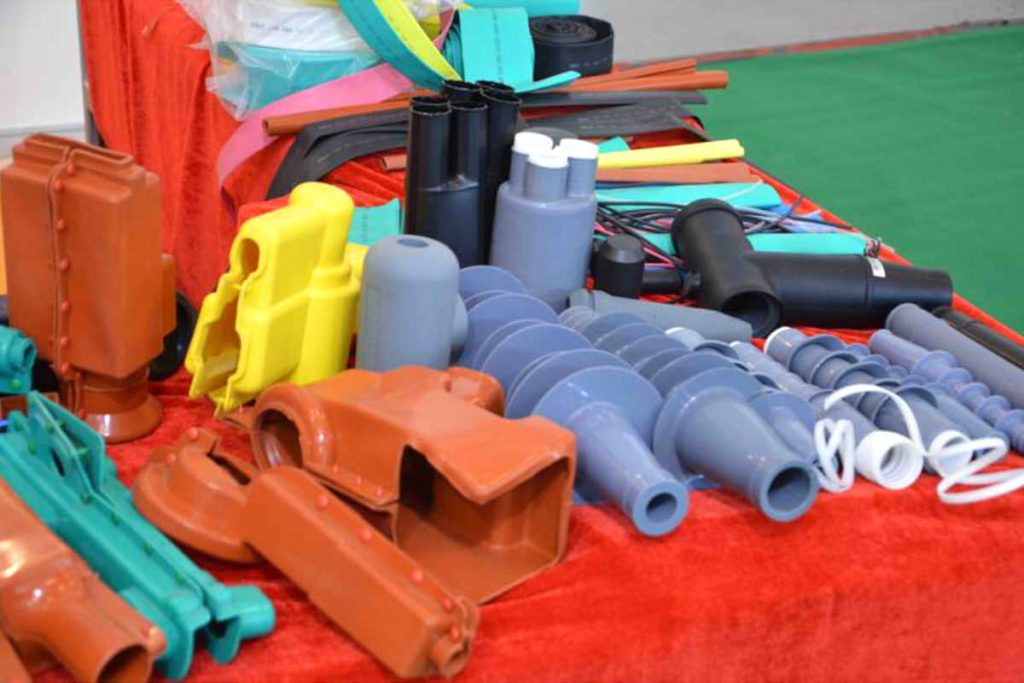
How to Choose the Appropriate Electrical Cable Termination?
To select the appropriate cable termination model, it is necessary to consider factors such as the rated current, the nominal voltage, the cross-sectional area of the conductor and the ambient temperature. First, The rated current and rated voltage of the termination must be determined based on the corresponding cable values., and choose a termination model that meets these requirements.
In second place, The appropriate termination specification should be chosen according to the cross-sectional area of the conductor., thus ensuring that the electrical termination is compatible with the diameter of the cable conductor. Finally, Environmental temperature and termination installation method must also be considered., selecting a model that is suitable for that environment and installation method.
Driver size calculation
When determining termination specifications, must be calculated according to the size of the cable conductor. For round conductors, An appropriately sized termination can be selected based on its diameter. For flat conductors, you need to calculate its effective diameter and then select a termination of the corresponding size.
The formula to calculate the effective diameter is:
Effective diameter = 2 × (Conductor Width × Conductor Thickness) / (Driver Width + Conductor thickness)
The appropriate termination is selected based on the effective diameter.
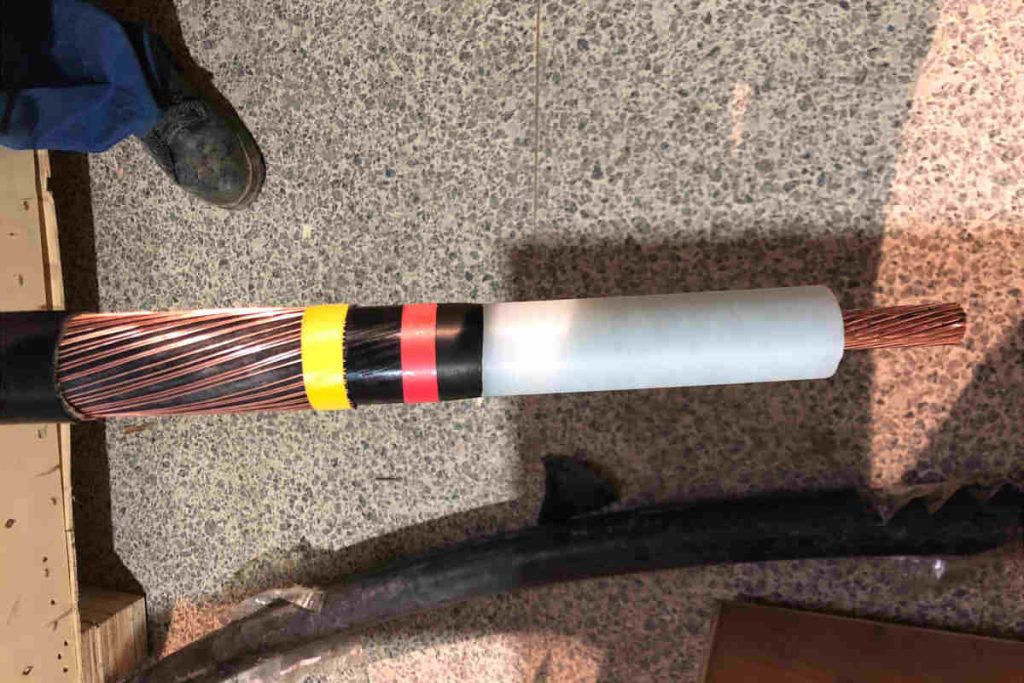
Calculation of the number of cable terminations
When installing cable terminations, The quantity needed should be calculated based on the length of the cable and the number of terminations.
The calculation formula is:
Number of terminations = Cable length × 2 ÷ Maximum distance allowed ÷ 0.8
The maximum distance allowed must be determined based on the model and specifications of the selected termination..
Generally, a cable has two endings. If the cable length exceeds 250 metros, an additional intermediate termination needs to be calculated. The number of cable terminations is not related to the number of cable cores, but with the diameter of the individual thread and the installation method.
If only the total length of the cable is known, The calculation of the number of cable terminations should be based on how many devices will be connected in total.
Difference Between Cold Shrink Cable Terminals and Heat Shrink Terminations
Cold Shrink Cable Electrical Terminals
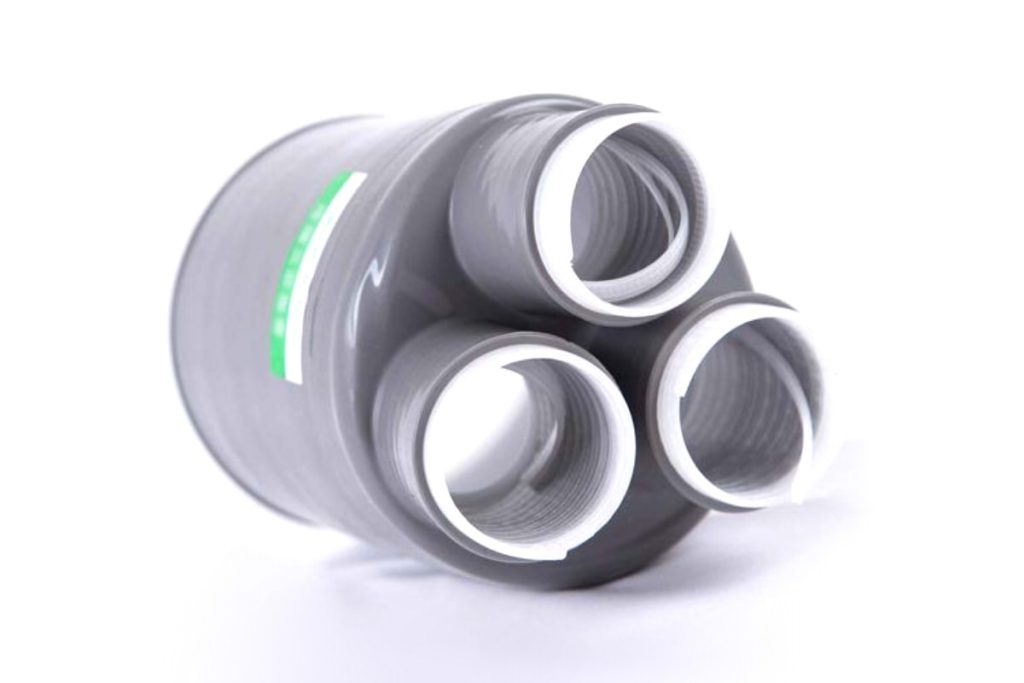
Cold shrink cable lugs use a cold shrink stress control tube, with a voltage range of 10kV to 35kV. For 1kV cables, cold shrink insulation tube is used for insulation reinforcement.. While, for 10kV cold shrink insulation fittings with internal and external semiconducting layers are used. At the terminals of three-phase electrical cables, a cold shrink fork assembly is used.
These terminals have good electrical and mechanical performance. They can be used long term in various harsh environmental conditions. Its advantages include compact size, ease of operation, speed and a wide range of applications. Cold shrink products eliminate the need and risks associated with the flame heating required in heat shrink products.
Heat shrinkable terminations
Heat shrinkable cable terminations use a heating method to shrink. Heating is a key step in the manufacturing of these terminations, and you can use a high power hair dryer or torch for this purpose. It is best to place the cable vertically before heating to facilitate operation and ensure uniform shrinkage of components.
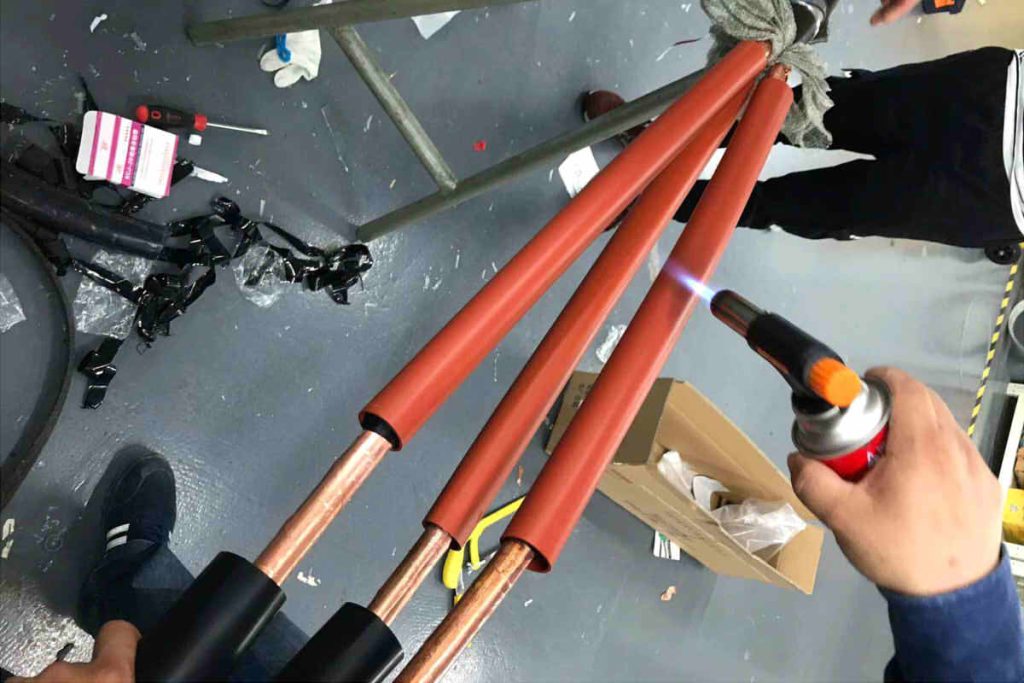
When heating, The following points should be taken into account: 1. Shrinkage temperature should be 110℃ to 120℃. 2. Adjust the torch flame to be yellow and soft, avoiding the use of a high temperature blue flame.
Compared to traditional cable accessories, heat shrinkable terminations have the advantages of being lighter, compact, safe, reliable and easy to install. They can be used in a long-term temperature range of -55℃ to 105℃, with a useful life of up to 20 years. Its radial contraction rate is ≥50%, and the longitudinal contraction rate is <5%, with a shrinkage temperature of 110℃ to 140℃. They are commonly used in terminations of cross-linked polyethylene cables or oil-impregnated cables up to 35KV.
Comparison between cold shrink terminals and heat shrink terminals
Compared, Heat shrink terminations are generally cheaper but more complicated to operate. Cold shrink terminations have higher technological content. In internal high voltage wiring networks of electrical supply companies, cold shrink terminations must be used. While, for general users use heat shrink terminations for both high and low voltage cables. In addition to the common types on the market, los flame retardant mineral insulated cables require special cable terminations.
Precautions in the Installation of Electrical Cable Terminations
- When installing the electrical termination of a cable, The outer jacket of the cable must first be removed to expose a sufficient length of bare conductor.
- Termination connection must be made using the correct crimping method.
- During the installation, It is important to ensure that the insulation of the cable is not damaged, that the termination is in close contact with the cable conductor and that the electrical contact is good.
- After completing the installation, Insulation resistance measurements and partial discharge tests must be performed, among other, to ensure good termination performance.
- The installation of cable terminations must be carried out by specialized technical personnel and must not be carried out without proper authorization.

